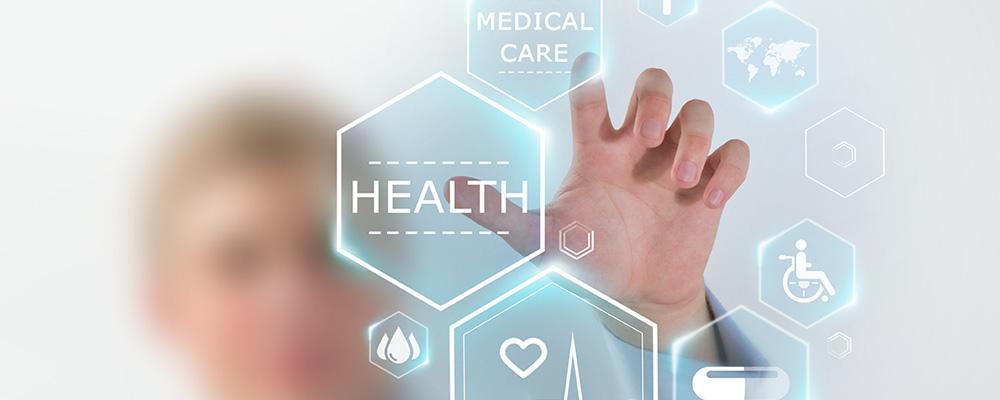
How the IoT and a Focus on UX are Leading a Medical Device Revolution
Here at ICS we’re excited about how the Internet of Things (IoT) is changing the lives of people every day — a topic we’ve been covering from all angles. For instance, my colleague Jeff Tranter described how IoT fits into the Qt ecosystem while Dorothy Shamonsky has written about the design challenges posed by the expanding number of IoT devices.
Me, I’m most intrigued by the way connected smart devices are transforming healthcare. According to Gartner (1), there will be more than 8 billion connected devices in use worldwide this year and close to 21 billion by 2020. But what does it take to ensure wide adoption of any new connected medical device — whether it’s a high-performance infusion pump, a home health monitoring system or a wearable fitness tracker?
It has to be foolproof. In other words, it needs to work — for the clinician and for the user.
Creating a Seamless User Experience for Doctors, Caregivers and Patients
Institutional caregivers (think hospitals, nursing homes etc.) are already overburdened by reduced staff and increased responsibilities so any new devices they use must work so well they are virtually invisible. These devices must facilitate patient care and wellness while requiring little user training and having no chance of introducing error.
Building devices that can accomplish this feat means creating great UX. That’s why usability research and usability testing are paramount in the design process of any new device.
The Rise of IoT Medical Devices
When I worked in the Hewlett-Packard Medical Products Group back in the ‘90s, I was introduced to the concept of telemetry, simply defined as the remote gathering of data. The device in question was a portable cardiac monitor that could read a patient’s heart rhythm and transmit data back to a central nursing station. This one-pound device allowed patients to remain ambulatory, providing them freedom to take short walks without having to disconnect from the tangle of electrodes that monitored their condition.
Although I didn’t know it at the time, that concept of a mobile device with sensors and data transmission was my introduction to the IoT, Medical Device edition.
Today, such a monitoring device is the size of the average mobile phone and patients can wear the monitor in the comfort of their own homes. That’s a reality that can have a huge impact on the quality of life for millions of people.
The Fitbit Revolution
What’s also changed since my days at HP: the wide availability of inexpensive, in-home health monitoring products that use Big Data analytics to provide feedback in real time to help a person correct potentially life-threatening behavior.
According to The Center for Disease Control (CDC), seven out of 10 deaths in the United States are caused by chronic conditions such as heart disease and diabetes, which the medical community classifies as preventable. (2) With feedback — sort of a mirror on a user’s behavior — people can be more proactive about meeting their health needs.
Take the Fitbit. The CDC says more than a third of adults in the U.S. struggle with obesity (3). People who wear a Fitbit or similar fitness tracker have instant access via a connection to a personal mobile phone or tablet to information on their exercise and sleep levels. There’s even an Echo Skill for the Fitbit so I can say “Alexa, ask Fitbit how many steps I’ve taken today.” Convenient, right? By tracking my Fitbit data, I can see where I might need improvement and take steps to reach my health goals.
Here’s another example. What was once HP Medical has now become part of Philips and they continue the tradition of innovative medical products for hospital and home. For instance, their Automated Medication Dispensing Service, a device that can be programmed to properly dispense medication, is helping seniors still living in their own homes make sense of complex medication schedules. If a dose is missed, remote caregivers can be alerted and steps taken to correct a situation before it becomes a crisis.
Device Manufacturers Increasingly Embrace the IoT
With all the benefits to patient outcomes, device manufactures are flocking to the IoT. And these devices can do more than enhance health. They can help save money. For instance, machines can use self-diagnosing techniques to monitor their own health and alert maintenance personnel about upcoming needs — something that can help hospitals reduce staffing levels and trim costs. Plus, smart devices allow repair or resupply work to become proactive instead of reactive, reducing machine downtime — another cost saver.
The Changing Face of Healthcare
From hospital to home, the sensors and connectivity provided by IoT devices are changing the face of healthcare. But to be truly transformational, IoT medical and health-centric devices must deliver an intuitive and compelling user experience. Not only does a device have to work in the sense that it functions correctly — measures, tracks, monitors or distributes as intended — it also has to work for the user.
From a smart infusion pump for safely administering medication in-hospital to a remote blood-monitoring system for in-home use to a fitness tracker helping you exercise smarter, well-designed devices can make a huge impact on our collective health.
If you’re looking to build a smart device that delivers a superior user experience, get in touch.
References
1. http://www.gartner.com/newsroom/id/3598917
2. http://www.medicaldesignbriefs.com/component/content/article/25545?star…